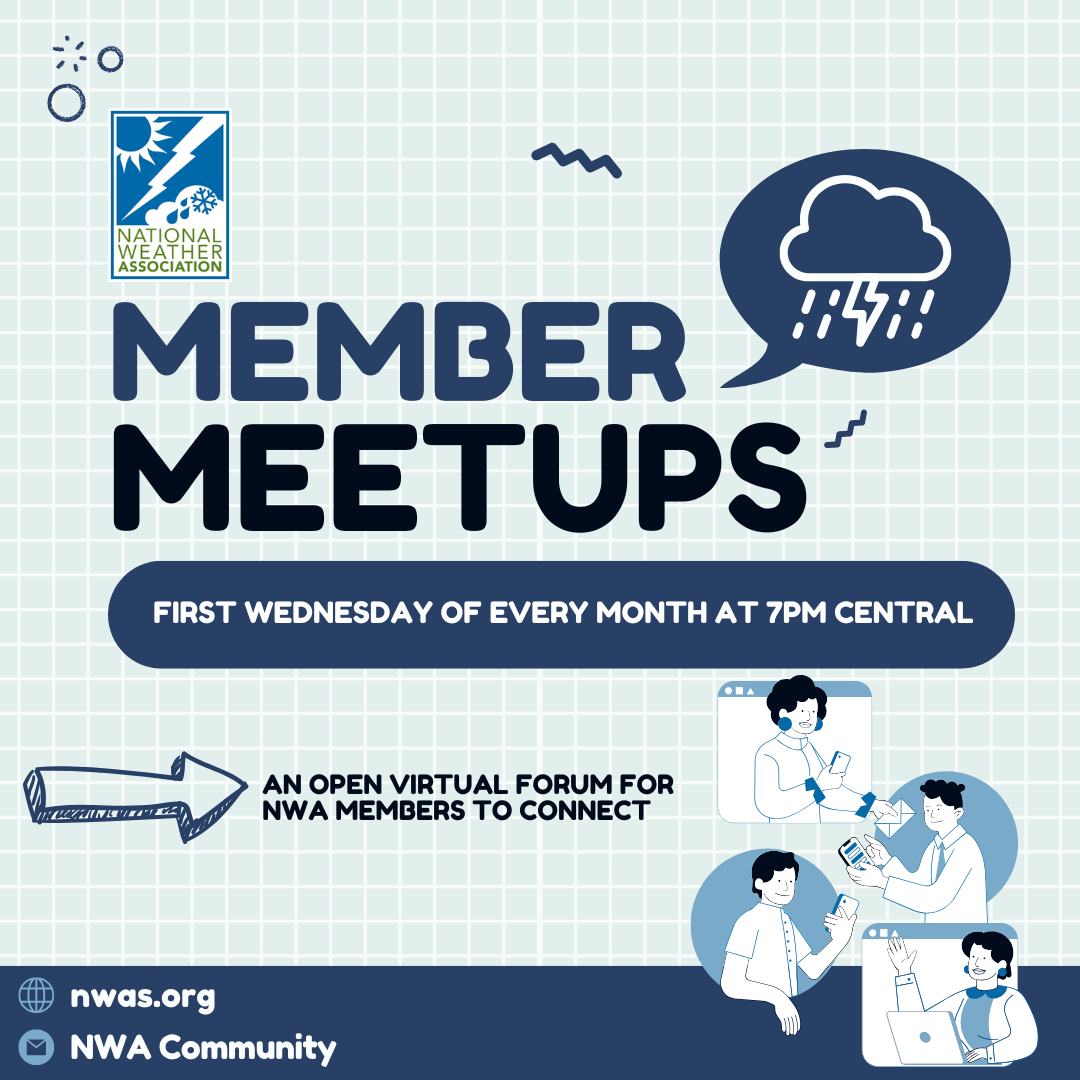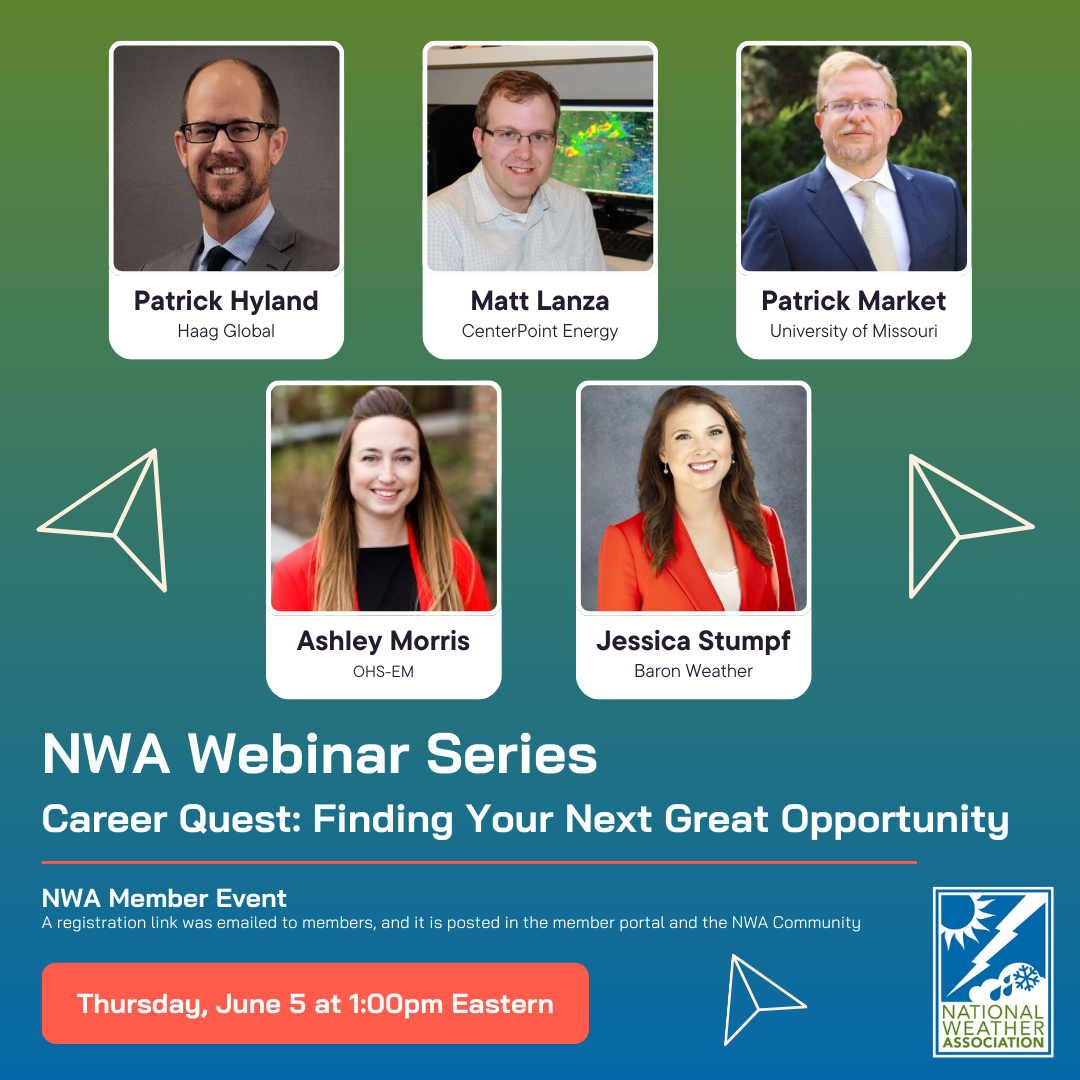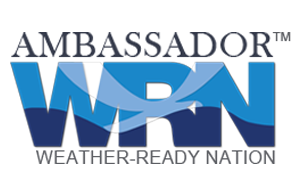|
NWA February 2019 Newsletter
Issue 19 - 2
What's in this newsletter...
President's Message
NWA President Paul Schlatter
Time to Submit an Abstract to the NWA Annual Meeting
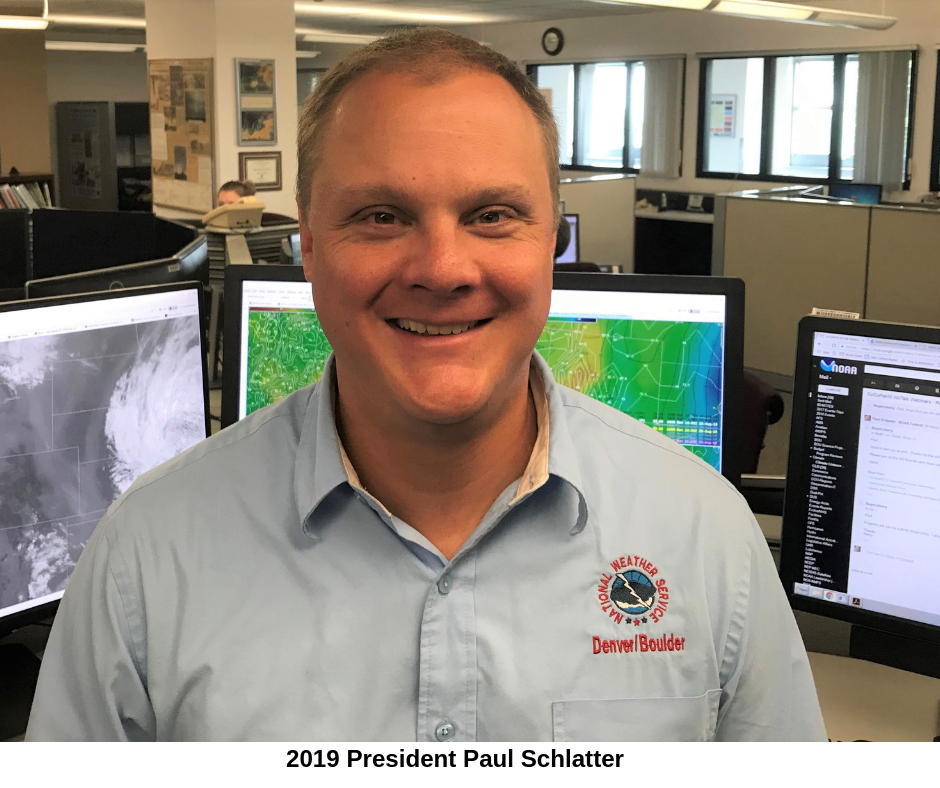 The time is here! The call for abstracts for the 2019 NWA Annual Meeting in Huntsville, Alabama, from September 7-12, 2019, is now out. You have until March 7 to submit an abstract. As I mentioned in January’s newsletter, the Annual Meeting Planning Committee, the NWA Board of Directors, and I are looking at novel ways to enhance your experience as an attendee, with a focus on finding ways to embrace this year’s theme of “Pay it Forward.” I have several exciting ideas to share as you consider submitting an abstract. The time is here! The call for abstracts for the 2019 NWA Annual Meeting in Huntsville, Alabama, from September 7-12, 2019, is now out. You have until March 7 to submit an abstract. As I mentioned in January’s newsletter, the Annual Meeting Planning Committee, the NWA Board of Directors, and I are looking at novel ways to enhance your experience as an attendee, with a focus on finding ways to embrace this year’s theme of “Pay it Forward.” I have several exciting ideas to share as you consider submitting an abstract.
First, let me begin by saying I LOVE attending the NWA Annual Meeting each year. It’s always a highlight for me, both professionally and personally. I’ve made lifelong friends at the meeting and developed key professional contacts that ended up being mutually beneficial through my career and personal life. My karaoke skills have improved because of the Annual Meeting (ask me about this the next time you see me). I bet you feel the same way if you attended the meeting in the past and, even if you haven’t ever attended, I pledge to do my best to ensure you have a similarly awesome experience at this year’s meeting.
Networking at the Annual Meeting is certainly a key component of the experience, but this month’s message is about the presentations/posters and motivating you to embrace new ideas as you prepare to submit an abstract. I truly believe the presentations at the Annual Meeting help me do my job better as a Science and Operations Officer at NWS Boulder. Whether it’s directly through learning about a new model, tool, or technique, or indirectly through social science, self-reflection, and/or improving forecast impact communication, I never feel cheated at the NWA presentation or poster sessions. However, at the last several meetings I’ve felt we could change things up in terms of the method of delivery. Is there a better way than “death by PowerPoint”? Don’t get me wrong, the right presenter can knock a PowerPoint presentation out of the park, keeping us on the edge of our seats and holding our full attention for 12-15 minutes (only picking up our phones to tweet about how awesome the presentation is). I believe there are alternative ways to deliver information and hook an audience. My first idea is to think about ways to make a presentation or session interactive. In Huntsville we will have the ability to use polling software tied to mobile phones. I know many of you are quite skilled at coming up with ways to make presentations more interactive, perhaps with this new capability you will come up with something really cool to involve the audience. If so, please indicate in your abstract how you will make it interactive.
A second idea for presentations isn’t as much about the method of delivery as it is about the presenters themselves. I can’t take credit for the idea since it was done once or twice in recent NWA Annual Meetings, and the great folks who are planning the Huntsville meeting have been making this idea a priority: joint presentations! At last year’s meeting in St. Louis, NWS Meteorologist-in-Charge at Houston (and recent Vice President of the NWA) Jeff Evans did a joint presentation with KPRC Houston Chief Meteorologist Frank Billingsley. They tag-teamed a fantastic presentation focused on Hurricane Harvey. Joint presentations fit nicely with the theme of “Pay it Forward” because colleagues in the weather enterprise are working together for the benefit of all involved. In nature that process is called symbiosis. A symbiotic relationship with one of your core partners benefits you both, as you each learn something new about the other’s operations and needs. You’ll likely make a friend in the process, maybe even get a mentor. The next time there is a high impact weather event, you’ll work even closer together to help get the message out. Joint presentations need not be just among NWS and broadcast meteorologists. Private sector, emergency management, and social scientists are all a part of our awesome community and can be tapped for doing joint presentations. The audience benefits from these as well because it shows two points of view of the same challenge. So I am asking you to be bold—reach out to a colleague from another sector to see if they will join you in presenting at the next NWA Annual Meeting. At a minimum you will strengthen your relationship, which improves service to the public in the long run. I plan to submit an abstract for a joint presentation with one of NWS Boulder’s core partners, the Colorado Department of Transportation, to highlight how we’ve worked together in the state of Colorado to prepare for winter storms. On the abstract submission form there is a special category for joint presentations called “Cross-sector Collaboration”. Be sure to select that category for a joint presentation.
A final idea for an abstract is directly tied to the “Pay it Forward” theme. One of the special sessions planned for the Huntsville meeting is focused on the mentor/mentee relationship. Think about a mentor or mentors who have done so much for you over the years. Wouldn’t you want to honor and thank them for all they have done? A special panel discussion at the Huntsville Annual Meeting will be set up to do just that. I envision a few pairs of mentors/mentees joining me on stage for a discussion about how they met, why the relationship has been so important, and how the relationship has improved their careers and lives. The end goal would be for all attendees to get a glimpse of what genuine mentor/mentee relationships are like and hopefully an understanding of how to find a mentor/mentee of their own. If this idea inspires you, there is a separate link on the main abstract page to fill out the form to nominate you and your mentor to participate in this session.
Call for Abstracts Page
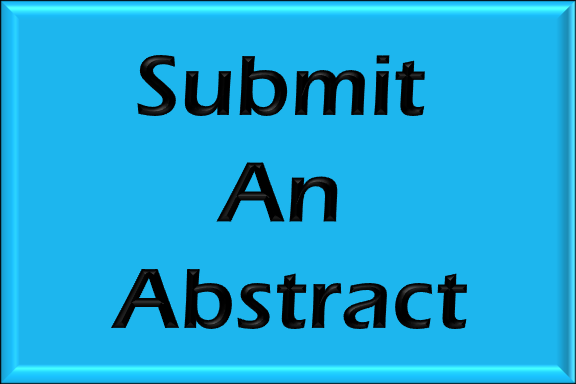 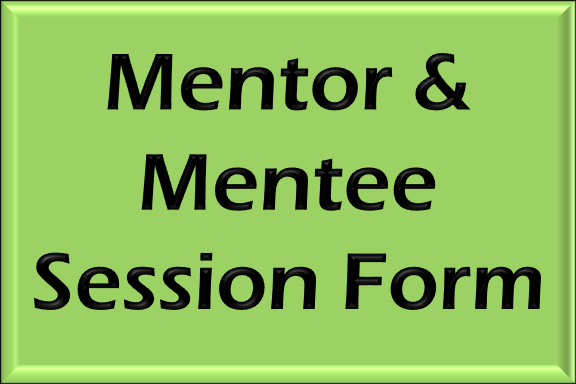 
Return to Menu
Change in NWA Membership Renewal Periods
by Janice Bunting, Chief Executive Officer
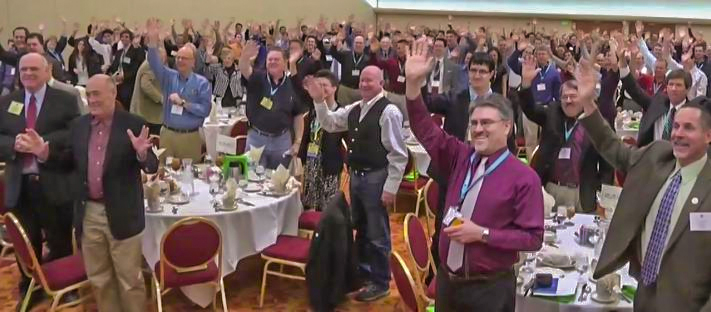 With the passage of the Amended and Restated NWA Bylaws in October 2018, the NWA is changing back to calendar year memberships from rolling year memberships. Here is a little history on this. Before the first electronic membership portal, all memberships were valid for the calendar year January 1 through December 31. For this reason, many of our members renew at the end of the year. When the portal was implemented, we changed to memberships that were valid from one year after joining or renewing. These were called rolling year memberships. Having all memberships due for renewal at the same time will make it more efficient to manage elections and NWA Seal activities. What does this mean for you? With the passage of the Amended and Restated NWA Bylaws in October 2018, the NWA is changing back to calendar year memberships from rolling year memberships. Here is a little history on this. Before the first electronic membership portal, all memberships were valid for the calendar year January 1 through December 31. For this reason, many of our members renew at the end of the year. When the portal was implemented, we changed to memberships that were valid from one year after joining or renewing. These were called rolling year memberships. Having all memberships due for renewal at the same time will make it more efficient to manage elections and NWA Seal activities. What does this mean for you?
- If your renewal date has been in December, you won’t see a change.
- If your renewal date falls after February 1 in 2019, you will pay prorated dues for 2019.
- New members who join during the year will pay prorated dues based on the month they join.
To get everyone back on a calendar year renewal period, we had to make some changes in Member Connect, especially to the Membership Expiration Date. For some, the Expiration Date it will not reflect your actual renewal date. See more below.
Office staff will send emails at the start of each month to those who are set for renewal in that month. It will include an invoice for prorated 2019 dues. You can pay through Member Connect, send a check, or pay by credit card over the phone. Note: February 2019 invoices have already been sent, and many have been paid. Thanks!
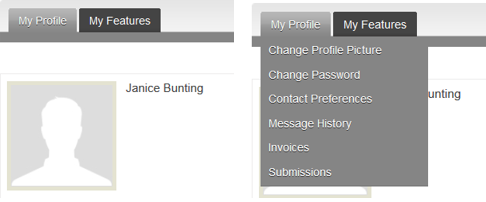
You might ask, how do I determine my renewal date and view invoices?
- Login to Member Connect (https://nwas.memberclicks.net) and go to My Profile. Look for Anniversary Date* and Expiration Date. (*Note: The Anniversary Date is your current or previous renewal due date.)
- If the Anniversary Date is on or before Jan. 31, 2019, and the membership Expiration Date is Dec. 31, 2019, your 2019 dues have been paid. Thank you!
- If the Anniversary Date falls between Feb. 1, 2019 and Dec. 31, 2019, and your membership expiration date is 12/31/2019, you will receive a renewal email during your anniversary month for prorated 2019 dues. Once you have paid the invoice, it will show a $0.00 balance.
- Check any past or current invoices by going to My Profile, hovering over the My Profile tab and selecting Invoices. (See the figure above.)
- If you are not sure what your renewal date is, or need help logging into Member Connect, please contact us at [email protected] or 405-701-5167.
Government employees impacted by the shutdown can have their dues renewal date extended to 60-days after the end of the shutdown. Please complete this form to request the extension.
Thank you for your patience as we make these changes in 2019 and thank you for being a member!
Janice Bunting
NWA CEO
New Seal Holders
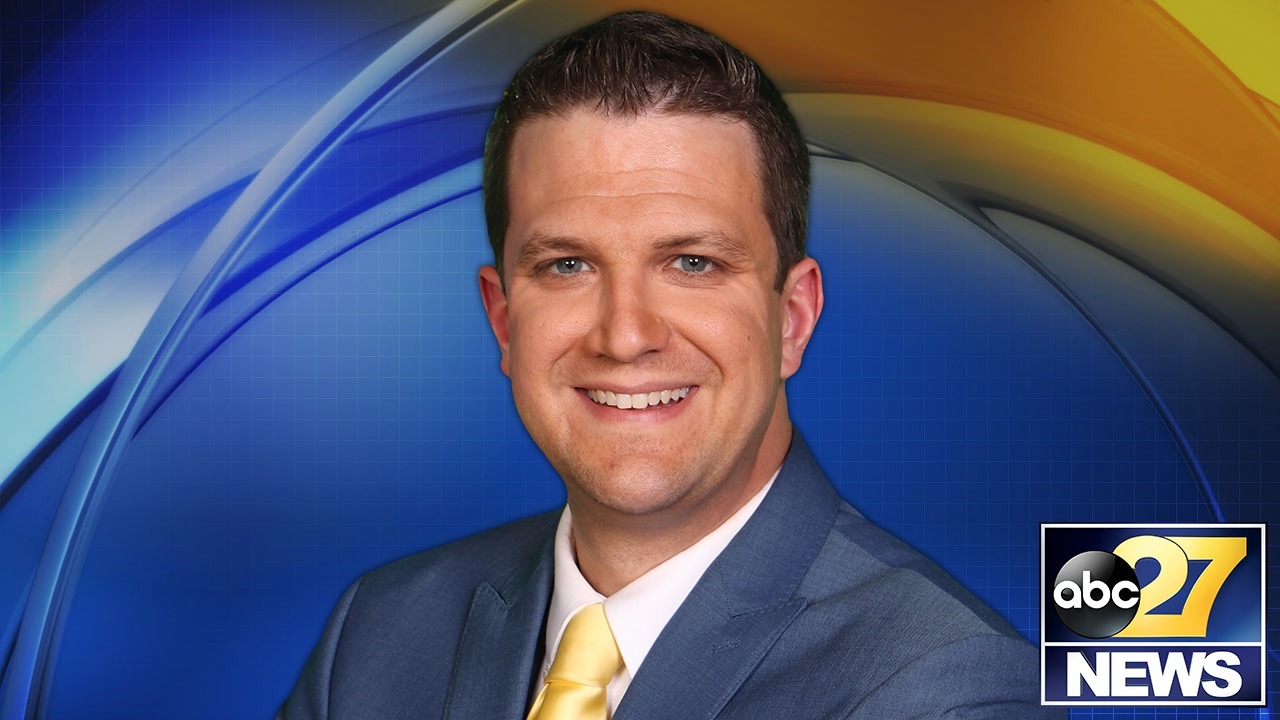 Congratulations to Brett Thackara on earning his NWA Seal of Approval! Congratulations to Brett Thackara on earning his NWA Seal of Approval!
Brett is the ABC27 Daybreak Meteorologist and Good Day PA Host at WHTM in Harrisburg, Pennsylvania. He studied meteorology and broadcasting at Penn State University, where he graduated in 2007.
The blizzard of 1993 piqued his interest in weather and convinced him to pursue a career in meteorology. If he wasn't doing weather, Brett says he would be a late night talk show host.
"What I love most about my job is that it is never boring, because the weather in Central PA is always challenging and different!"
****
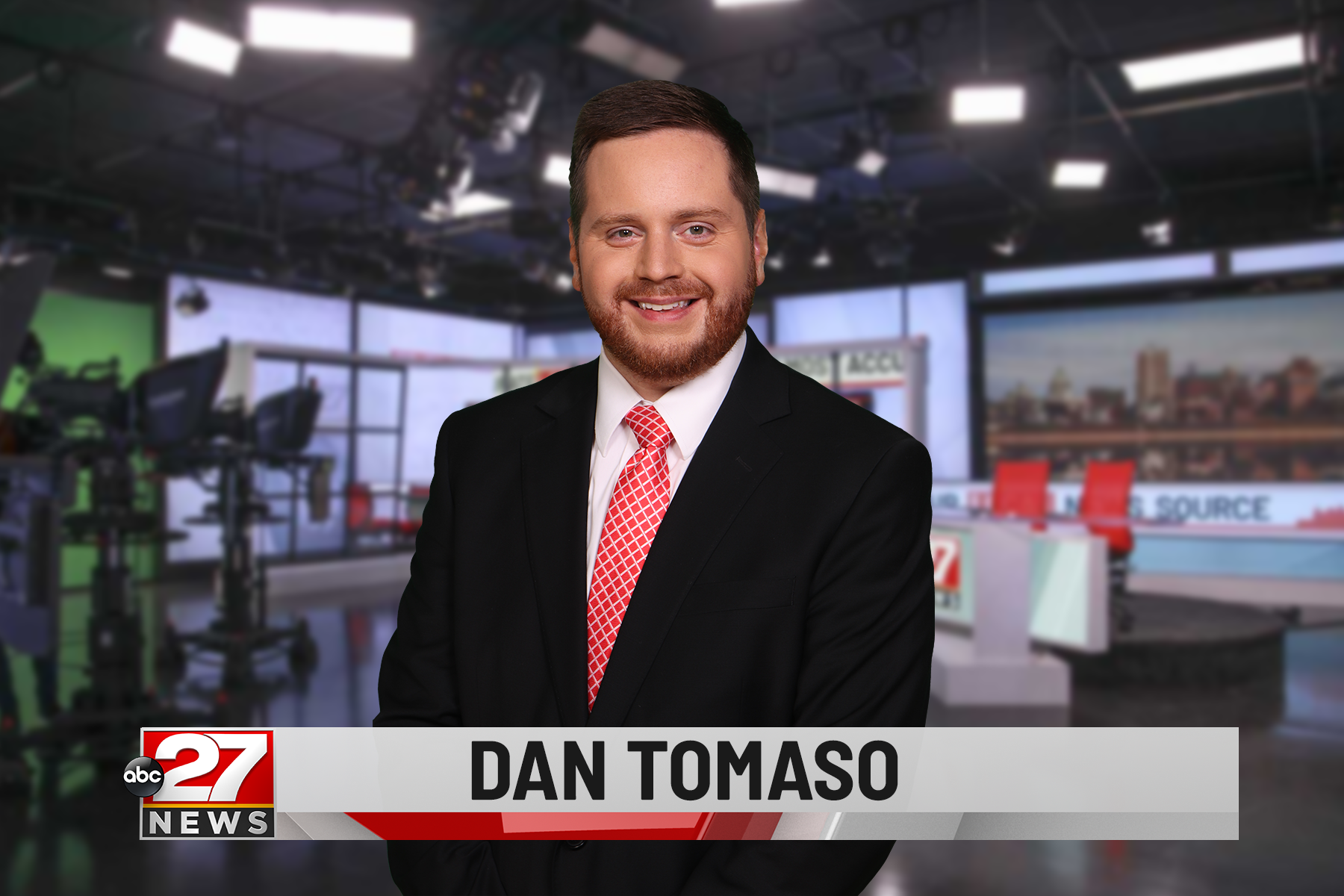 Dan Tomaso is our second new Seal holder this month. He is the weekend evening meteorologist at WHTM in Harrisburg, Pennsylvania. Dan Tomaso is our second new Seal holder this month. He is the weekend evening meteorologist at WHTM in Harrisburg, Pennsylvania.
Dan was inspired to study weather by Hurricane Danny in 1997. His interest led him to Penn State University, where he studied from August 2008 to March 2015, earning both his bachelor's and master's degrees in meteorology. His thesis, "Seasonal and Interannual Variability of the Upper Delaware Estuary Dissolved Oxygen and Dissolved Inorganic Carbon Budgets," is published in the Journal of Geophysical Research: Biogeosciences. His Ph.D. dissertation is still in progress.
Dan is a native of Harrisburg and grew up watching the weather on ABC27. He was hired on to the station in August 2009 and has been there ever since.
Return to Menu
COMET Quarterly Announcement Winter 2019
by David Russi, UCAR/COMET Translation Coordinator
This fall, COMET published a new case study lesson for the GOES-R GLM instrument, and the fifth lesson of the Instrumentation and Measurement series on humidity. We’ve also been busy updating many of our lessons, and this article includes a list of our most recent updates in the satellite and tropical program areas. We also published five new lessons in Spanish on topics related to satellites, EPS, aviation icing, and measurements. Follow the links below to COMET’s newest publications on MetEd.
English
New COMET Lessons
COMET Lesson Updates
Tropical
Satellite
New Spanish Lessons
Currently, these materials are freely available to everyone, courtesy of our primary sponsors: NOAA's NWS, NESDIS and National Ocean Service programs, EUMETSAT, the Naval Meteorology and Oceanography Command, the Meteorological Service of Canada, Bureau of Meteorology, the U.S. Army Corps of Engineers, and the Department of the Interior Bureau of Reclamation.
The High Plains AMS/NWA Chapter Minutes
by Jeremy Martin, President and Wesley Havorka, Secretary
www.highplains-amsnwa.org
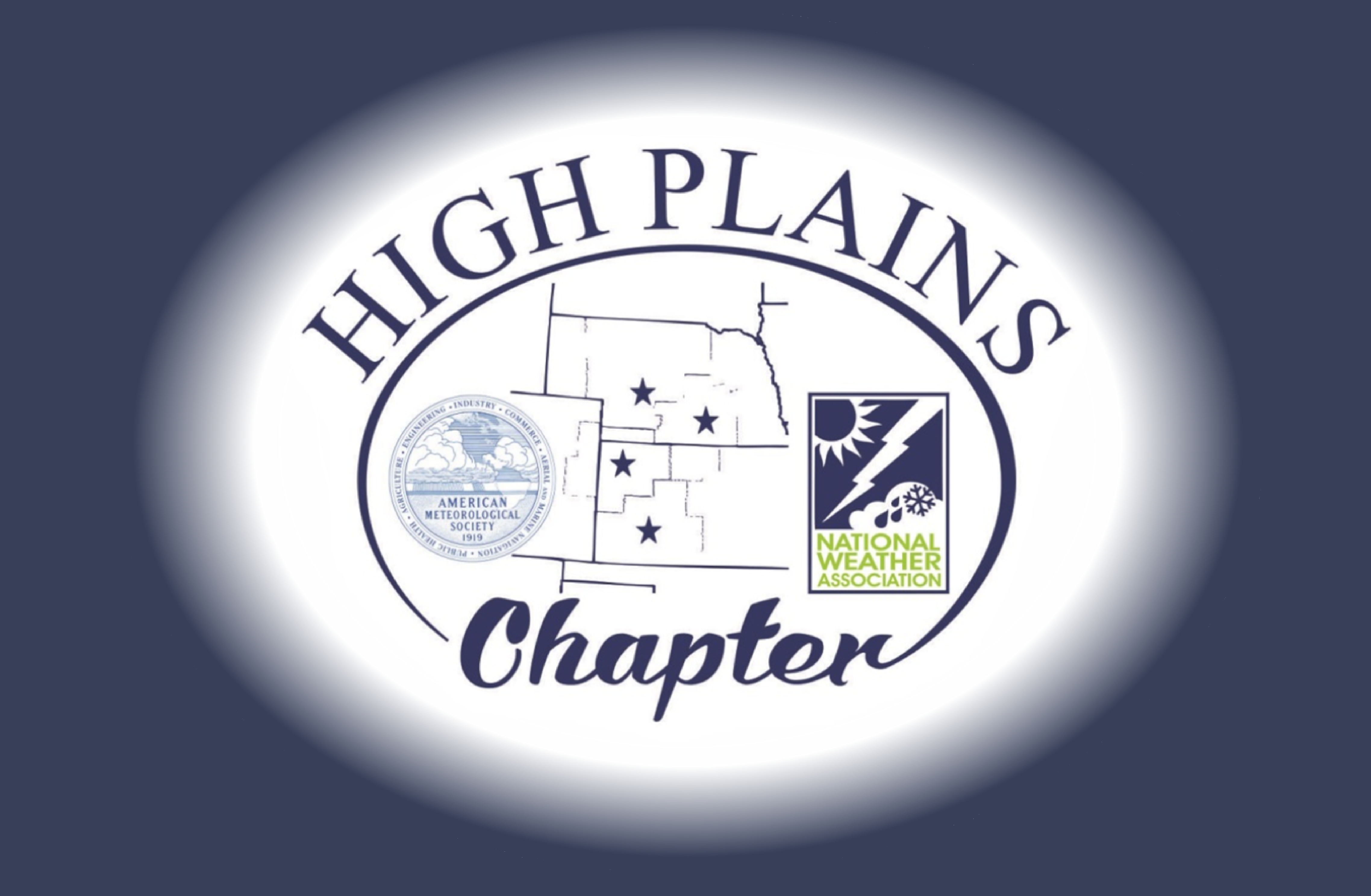 The AMS/NWA High Plains Chapter held an in-person meeting at the Norton Library on Thursday, December 21, at 11:30 a.m. Due to sickness and other obligations, only nine chapter members were able to attend. The meeting started with a treasury report of the amounts in the general and Jim Johnson Scholarship funds. There was a short discussion on what to do with the extra money in the general fund, but this will be discussed further with chapter officers and when more members are able to attend. Brian Warren, the Observation Program Leader from the NWS Goodland, Kansas, Forecast Office, then gave an update on the plans for the 21st High Plains Conference scheduled for August 6–8, 2019. It will be held at the Prairie Museum of Art and History in Colby, Kansas, with the Banquet at City Limits Bar & Grill. Hotels in Colby are Sleep Inn and Holiday Inn. Dr. Stephan Smith, Director of NOAA VLab, is lined up as a keynote speaker and the committee is looking for other keynote speakers. They sent invitations to Dr. Louis Uccellini, Director of the NWS, and John Murphy, Chief Operating Officer of the NWS. Letters have also been sent to professors at universities and colleges within an eight-hour drive of Goodland to see if any of their students would be interested in presenting at the conference. No other new business was discussed during the meeting. The AMS/NWA High Plains Chapter held an in-person meeting at the Norton Library on Thursday, December 21, at 11:30 a.m. Due to sickness and other obligations, only nine chapter members were able to attend. The meeting started with a treasury report of the amounts in the general and Jim Johnson Scholarship funds. There was a short discussion on what to do with the extra money in the general fund, but this will be discussed further with chapter officers and when more members are able to attend. Brian Warren, the Observation Program Leader from the NWS Goodland, Kansas, Forecast Office, then gave an update on the plans for the 21st High Plains Conference scheduled for August 6–8, 2019. It will be held at the Prairie Museum of Art and History in Colby, Kansas, with the Banquet at City Limits Bar & Grill. Hotels in Colby are Sleep Inn and Holiday Inn. Dr. Stephan Smith, Director of NOAA VLab, is lined up as a keynote speaker and the committee is looking for other keynote speakers. They sent invitations to Dr. Louis Uccellini, Director of the NWS, and John Murphy, Chief Operating Officer of the NWS. Letters have also been sent to professors at universities and colleges within an eight-hour drive of Goodland to see if any of their students would be interested in presenting at the conference. No other new business was discussed during the meeting.
There were three presentations from separate NWS offices about significant storms in their forecast areas throughout the year. Jeremy Martin (Science and Operations Officer at NWS Goodland) talked first about a severe outbreak on July 29 when a severe storm developed around Cheyenne, Wyoming, and tracked all the way down into the Oklahoma Panhandle. Multiple tornadoes and large hail were reported with this storm. Wesley Hovorka (meteorologist at NWS Dodge City, Kansas) was next and talked about the events in the Dodge City forecast area with unique social media posts throughout the year. Finally, Jordan Thies (meteorologist at NWS Hastings, Nebraska) talked about several snow storms that occurred throughout the year. After the presentations, the meeting was adjourned around 12:30 p.m. The next High Plains Chapter meeting is expected to be in a couple of months.
Return to Menu
Meteorologists, Mentors, and Mentees – Oh My! Learning Opportunities are Everywhere
Mike Mogil
How The Weatherworks, Naples, Florida
and
Matt Bolton
How The Weatherworks and College of Arts and Sciences, Saint Leo University, Saint Leo, Florida
In last month’s newsletter installment (one of three), we provided an overview of mentoring (a relationship in which a person helps another willing person to learn something). This includes the fact that all of us likely mentors and are mentored hundreds of times a year. That’s because, as Bernard Meisner (retired from NOAA) once noted, “we constantly interact with our peers and others in a consulting mode.” Meisner consulted or mentored every day at work.
The AMS and NWA each have mentoring programs that pair experienced meteorologists and atmospheric scientists with “up-and-comers.” The AMS program is more structured and involves screening and pairing applicants with mentors in their sub-discipline. The Board for Private Sector Meteorologists and the Board of Certified Consulting Meteorologists (CCM) collaborate on this program. The NWA Program, currently less structured but under revision, fosters these interactions via personal selections.
Of course, such mentoring frameworks exist across the career landscape and in social and personal spheres. Each setting offers ways to share or receive information, ideas, and perspectives. You can see mentorship play out in TV shows like The Food Network show “Kids Baking Championship”. Here, judge-mentors guide young chefs on their path to baking excellence. At my Mathworks Tutoring Center in Naples, Florida, tutors mentor students by asking about college choices, careers, and other learning aspects, and then guiding some of them through self-perpetuated learning. Students often complain about classroom situations, opening the door for tutors to guide students toward potential resolutions. Most importantly, parents can be the ultimate mentors for young minds.
Matt and I met during a weather camp at Jackson State University and subsequently formed an immensely beneficial, mutual mentorship. As a long-distance high school intern on the autism spectrum, Matt was very unsure of himself, even as he attended several NWA and AMS meetings. Early on, I encouraged him to navigate a conference on his own. Although unplanned (and thus discomforting to him), this forced Matt beyond his comfort zone. From that point, he escaped the protective phase of mentoring and it became apparent that he could participate on the periphery of meteorology, touching the field through psychology.
Matt is now well-published and often presents important information at conferences (e.g., color-blindness inclusion in watch/warning and other graphics), and he has befriended and mentored many recent summer weather campers. In fact, Matt’s insight into autism has helped me work more productively with several campers. This is an excellent example of how the mentor and the mentee learn from one another.
Another compelling mentorship story was recently shared by Dr. Alicia Wasula (CCM) at a recent Association of Consulting Meteorologists breakfast meeting at the 99th AMS Annual Meeting. Wasula is the owner of Shade Tree Meteorology located in upstate New York. She “…was fortunate to have a mentor who not only was well-versed in my field (forensic meteorology), but also experienced in operating a small business. The three years we spent working together gave me the knowledge I needed to be confident as I became a small business owner myself. Looking to the future, the opportunities I have had to mentor young professionals have been equally as valuable. The relationships I have had have often transitioned from ‘mentor/mentee’ into ‘respected peer and colleague,’ resulting in mutually beneficial collaboration.”
The recent movie “The Green Book” also showcases how two adults can wear mentor and mentee hats simultaneously. Just look around and we are sure that you will see many more examples throughout your normal life experiences.
Outside the meteorological realm, my wife Barbara and I have a mentor at the Naples Bridge Center. Jack Breuer, manager, routinely watches the play of attendees. For a long time, we were content to stay in the lower-ranking group and earn our occasional Master Points. One day, Breuer casually mentioned that we were good enough players to be in the higher-ranking group. Afraid to step into those chilly waters, we refused through inaction. Weeks later, he reminded us again and we accepted. We were decimated in our initial foray into the higher-ranking group and almost went back to the lower-ranking group, but Breuer encouraged us to persevere (and we did). We have used that push to play against some incredible players, learning along the way (and winning many more Masters Points).
It would be easy to present a listing of many more such experiences. However, it would be more instructive (look out, Mike is mentoring) for you to look to your experiences and see how the mentoring experience permeates your life. Then, taking cues from these, be on the lookout for further opportunities to be a valued mentor and mentee. Please feel free to share your stories with us, since we are working on a more thorough, formal mentoring article.
Most of the mentoring that we have discussed in these first two installments has focused on adult-level mentoring. Yet, mentoring young minds, especially those of future meteorologists, is of paramount importance. Summer weather camps, school visits, and even time spent during student visits to weather offices (government, business, and TV) often give students insights and excitement that help them determine if weather should be their chosen career path. More on this will be covered in the next installment, as we close our newsletter series.
NOTE: Matt Bolton is a current student member, and H. Michael Mogil a former member, of the NWA’s Professional Development Committee. Matt also serves on the NWA’s Diversity Committee. Matt can be reached for correspondence on this article series at [email protected] and @mboltonwx on Twitter.
Return to Menu
GOES-17 Becomes GOES-West
On February 12, GOES-17, the second of the National Oceanic and Atmospheric Administration’s (NOAA) next-generation geostationary weather satellites, completed its checkout phase and is now operating in the GOES West position, providing faster, more accurate, and more detailed observations used by National Weather Service forecasters to predict Pacific storm systems, severe storms, fog, wildfires, and other environmental dangers.
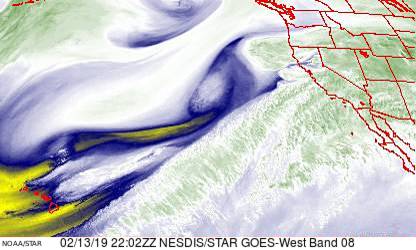 NOAA also announced that NOAA-20, the first spacecraft in the Joint Polar Satellite System, is operating as NOAA’s primary afternoon polar satellite. It features the most advanced technology NOAA has ever flown in a polar orbit to capture more precise observations of the world’s atmosphere, land, and waters. NOAA also announced that NOAA-20, the first spacecraft in the Joint Polar Satellite System, is operating as NOAA’s primary afternoon polar satellite. It features the most advanced technology NOAA has ever flown in a polar orbit to capture more precise observations of the world’s atmosphere, land, and waters.
“Extraordinary observations from GOES-17 are being infused into the forecast process, enabling us to offer new and improved forecasts, products, and services that save lives and property,” said Louis W. Uccellini, Ph.D., director, NOAA’s National Weather Service.
GOES-17 is intended to replace GOES-15, which has been operational as GOES West since December 2011. However, due to technical issues discovered during the testing phase of the Advanced Baseline Imager (ABI), NOAA will operate both satellites in unison until early July 2019. This overlap will allow for further performance assessment of GOES-17 before GOES-15 is placed in storage as a backup. NOAA has continued working tirelessly to ensure maximum performance from its satellite fleet.
“The GOES-17 ABI is now projected to deliver more than 97 percent of the data it was designed to provide, a testament to the skill and dedication of the engineers and all the GOES project team members,” said Stephen Volz, Ph.D., director, NOAA’s Satellite and Information Service. “We are confident the GOES constellation will continue to meet the needs of forecasters across the country.”
Read the full NOAA news story here.
Return to Menu
NWA 2019 Annual Meeting Update
The hotel blocks for the 2019 Annual Meeting will open in early March. The Embassy Suites in downtown Huntsville, Alabama, is the conference hotel. The meeting space is in the Von Braun Center, which is connected to the Embassy Suites by a covered walkway.
Room blocks have also been reserved at the Springhill Suites by Marriott Huntsville, Homewood Suites by Hilton, and the brand new AC Hotel Marriott Huntsville Downtown. Prices will vary, but range from around $100 to $125 per night before taxes.
The NWA has reserved meeting space from Friday September 6 through Friday September 13. If you wish to hold a special meeting or workshop, please use our Event Proposal Form to submit a request, or contact the NWA Office at [email protected] or 405-701-5167.
The annual meeting web page will be updated as new information is available. #NWAS19
Return to Menu
|

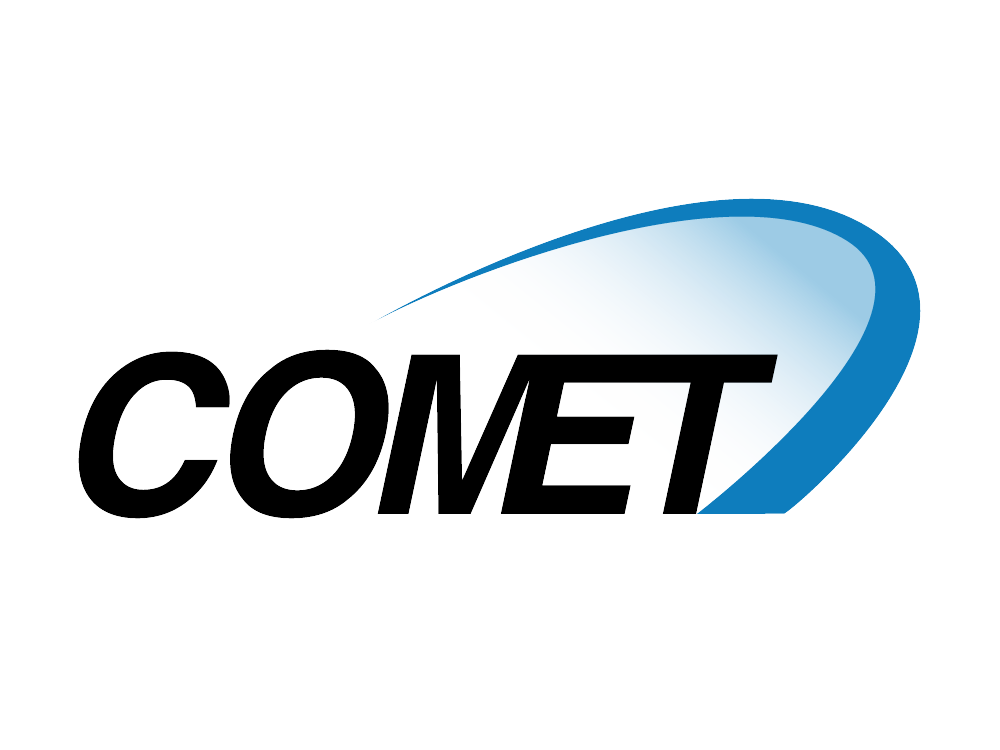
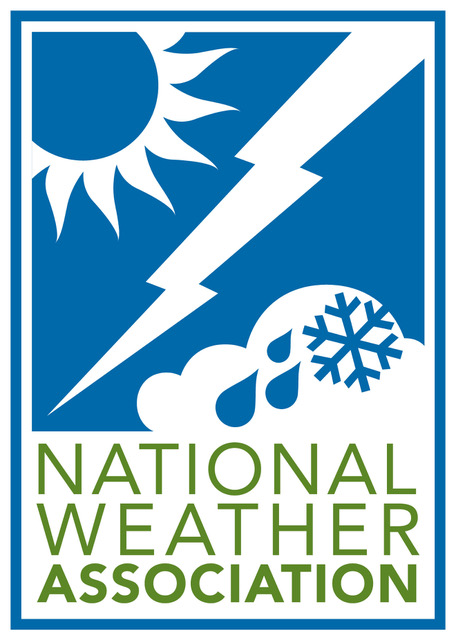
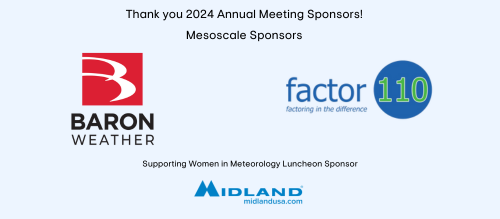
 The time is here! The
The time is here! The 




 Dan Tomaso is our second new Seal holder this month. He is the weekend evening meteorologist at WHTM in Harrisburg, Pennsylvania.
Dan Tomaso is our second new Seal holder this month. He is the weekend evening meteorologist at WHTM in Harrisburg, Pennsylvania. The AMS/NWA High Plains Chapter held an in-person meeting at the Norton Library on Thursday, December 21, at 11:30 a.m. Due to sickness and other obligations, only nine chapter members were able to attend. The meeting started with a treasury report of the amounts in the general and Jim Johnson Scholarship funds. There was a short discussion on what to do with the extra money in the general fund, but this will be discussed further with chapter officers and when more members are able to attend. Brian Warren, the Observation Program Leader from the NWS Goodland, Kansas, Forecast Office, then gave an update on the plans for the 21st High Plains Conference scheduled for August 6–8, 2019. It will be held at the Prairie Museum of Art and History in Colby, Kansas, with the Banquet at City Limits Bar & Grill. Hotels in Colby are Sleep Inn and Holiday Inn. Dr. Stephan Smith, Director of NOAA VLab, is lined up as a keynote speaker and the committee is looking for other keynote speakers. They sent invitations to Dr. Louis Uccellini, Director of the NWS, and John Murphy, Chief Operating Officer of the NWS. Letters have also been sent to professors at universities and colleges within an eight-hour drive of Goodland to see if any of their students would be interested in presenting at the conference. No other new business was discussed during the meeting.
The AMS/NWA High Plains Chapter held an in-person meeting at the Norton Library on Thursday, December 21, at 11:30 a.m. Due to sickness and other obligations, only nine chapter members were able to attend. The meeting started with a treasury report of the amounts in the general and Jim Johnson Scholarship funds. There was a short discussion on what to do with the extra money in the general fund, but this will be discussed further with chapter officers and when more members are able to attend. Brian Warren, the Observation Program Leader from the NWS Goodland, Kansas, Forecast Office, then gave an update on the plans for the 21st High Plains Conference scheduled for August 6–8, 2019. It will be held at the Prairie Museum of Art and History in Colby, Kansas, with the Banquet at City Limits Bar & Grill. Hotels in Colby are Sleep Inn and Holiday Inn. Dr. Stephan Smith, Director of NOAA VLab, is lined up as a keynote speaker and the committee is looking for other keynote speakers. They sent invitations to Dr. Louis Uccellini, Director of the NWS, and John Murphy, Chief Operating Officer of the NWS. Letters have also been sent to professors at universities and colleges within an eight-hour drive of Goodland to see if any of their students would be interested in presenting at the conference. No other new business was discussed during the meeting.  NOAA also announced that NOAA-20, the first spacecraft in the Joint Polar Satellite System, is operating as NOAA’s primary afternoon polar satellite. It features the most advanced technology NOAA has ever flown in a polar orbit to capture more precise observations of the world’s atmosphere, land, and waters.
NOAA also announced that NOAA-20, the first spacecraft in the Joint Polar Satellite System, is operating as NOAA’s primary afternoon polar satellite. It features the most advanced technology NOAA has ever flown in a polar orbit to capture more precise observations of the world’s atmosphere, land, and waters.